Square-Foot Gardening for Beginners
Square foot gardening for beginners is an excellent option for anyone that is short on space. It is also a great way to grow a lot in a little area. With just a couple of raised beds and a little planning, you can grow enough produce in your backyard garden to feed your entire family.
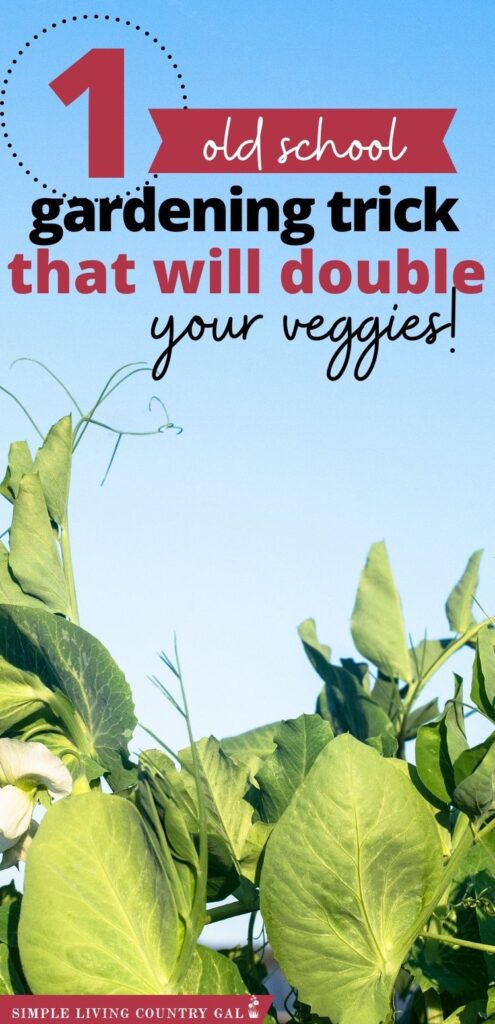
When I first started gardening I had a huge plot full of long rows that seemed to go on for days. After learning about square foot gardening, I transformed my huge garden into smaller beds where I was able to plant more in a much smaller space.
The results meant less work for a bigger yield. Less weeding, less disease, and a bigger healthier harvest. Less work for more tomatoes? Count me in!
But what exactly is square foot gardening and where did it come from? And why is it a popular choice for gardeners?
Let’s look at a little history first.
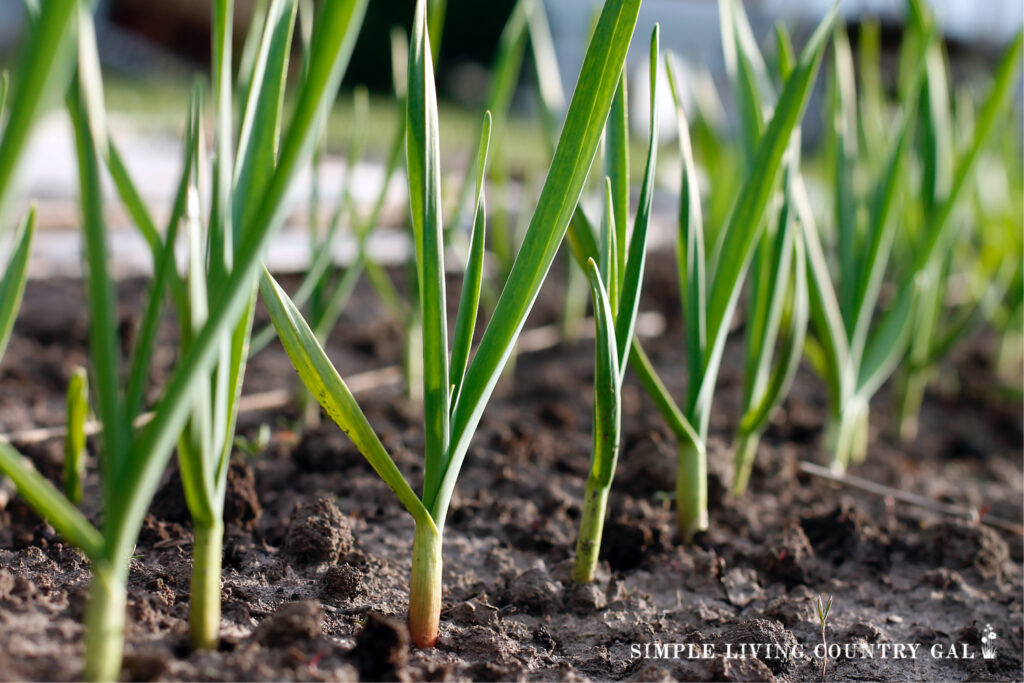
Square foot gardening is a type of gardening that uses companion planting to get the biggest harvest out of the smallest space. It got its start in 1981 as a concept developed by Mel Bartholomew, a civil engineer and hobby gardener, who started a new movement with his book Square Foot Gardening.
He brought attention to the fact that the common gardening methods of single-row gardening weren’t as productive as they could be. Using his skills as a city designer and planner, he came up with the idea of square foot gardening, growing a bigger harvest in a smaller space.
His concept caught on around the world, and gardeners everywhere were excited about growing more food in a smaller space. It not only helped people improve their well-being with more healthy produce, it also helped populations around the world grow enough food to feed their communities.
Bartholomew’s concepts are still very relevant today and used by both gardening hobbyists as well as families and communities growing food to feed many people. It’s a space-saving approach, produces a larger amount of produce, and bonus….it’s easy to learn.
Square Foot Gardening for Beginners
If you’re just starting out, this gardening method is easy to learn and will help you get the biggest and best results from your garden. And because it’s a smaller garden plan, you can put it almost anywhere. A huge benefit of this unique gardening approach.
Benefits of Square Foot Gardening
Before we dive into the how let’s first go over why this style of gardening is so beneficial.
- You can grow as much food in a small space as you could with traditional single-row planting.
- It’s compact and easy to tuck into a spot in your yard. The size is usually a 4×8 raised garden bed, but if you are short on space, you could even use a 4×4 raised bed.
- You don’t need a big yard or even a raised bed for that matter, you can easily plant your garden on your balcony, patio, or a small corner of your yard.
- With the right setup, you won’t need to weed. BONUS!
- It’s less work, and because it’s a raised bed, there’s less strain on your body.
- It won’t damage your yard, and you can grow a beautiful garden even if you don’t have good soil in your yard.
- It’s so easy that even beginner gardeners can master it.
- You’ll save money and improve your health by growing your own healthy produce.
With so many benefits and the ability to garden just about anywhere, this gardening technique is perfect for anyone who wants to grow their own produce. Plus, you won’t have to dig up your backyard and go to all the trouble of preparing a plot in order to get started. With a few tools and some planning, you can get your garden started in one day; it’s that easy.
Raised Beds
A raised bed is simply a framed-in area that sits on top of the soil. Or, in some cases, your patio or balcony. It does not require digging into the ground and can be placed anywhere as long as it will receive plenty of light.
Raised beds are versatile and can be used to plant anything you want, including flowers.

Think of it as a wooden box with four sides and a bottom; that’s it. You can build your own or buy one ready-made. For the purpose of square foot gardening, you’ll want one that’s 4’ deep and 8’ long. If your space is small, such as an apartment balcony, you can reduce the size to a 4’ square, but your harvest will, of course, be less.
SLCG PRO TIP: Before heading out to buy the supplies you need, look around at what you have now. A raised bed does not need to have a wooden frame to be successful. You can use rocks, cinder blocks, even logs. The trick is to create a border that will hold the soil in securely so your bed lasts for years to come.
Raised beds can also be as deep as you’d like. Not sure? You can start out low and later on if needed, you can easily make the bed deeper by building the sides higher. When you’re planning your garden and deciding what you want to grow, consider the depth each plant requires as this can play a factor in the depth of your raised bed.
Not sure what to grow? Read more on my go-to vegetable list for new gardeners here. I will walk you through what the top veggies are, how to plant and care for them, and why they are a good choice for new gardeners.
If you’re buying a raised bed that is ready-made like this one, you can expect to pay around $100, give or take. But you can easily make your own with scrap wood you may have lying around, or you can purchase a few boards from a home improvement store.
SLCG PRO TIP: Be sure to keep your bed just 4’ in width; this makes it easy to reach across for planting, harvesting your plants, or pulling weeds. The soil in a raised bed is quite soft and stepping in to reach the middle is probably not the best option. Keep it at a size that you know you can reach without having to go into the bed itself.
Your Square Foot Garden Plan
As mentioned earlier, your key to success lies in planning. A square foot garden won’t succeed if you don’t take the time to plan it well in advance.
1. Find Your Space
Where will you place your garden? It’s important to decide this first because once you put it in place, fill it with soil, and start growing, it will become impossible to move. Not sure? Here are a few tips.
- Choose a spot that gets plenty of sunlight most days, 8-10 hours is preferred.
- You’ll also want to make sure the ground is level. If necessary, you may need to level your selected area with a little fill dirt.
- Choose an area that is away from woods where rabbits and other animals can get easy access to your veggies.
- Choose an area that is close to a water source. Hauling water will quickly kill your love of gardening so if you can place it close to a hose you will be thankful later on.
2. Build or Purchase Your Raised Bed
Building your own bed is really quite easy but if you chose to purchase a kit be sure to do order things in enough time to plant when your zone states is the best time to do so. Find your zone information here.
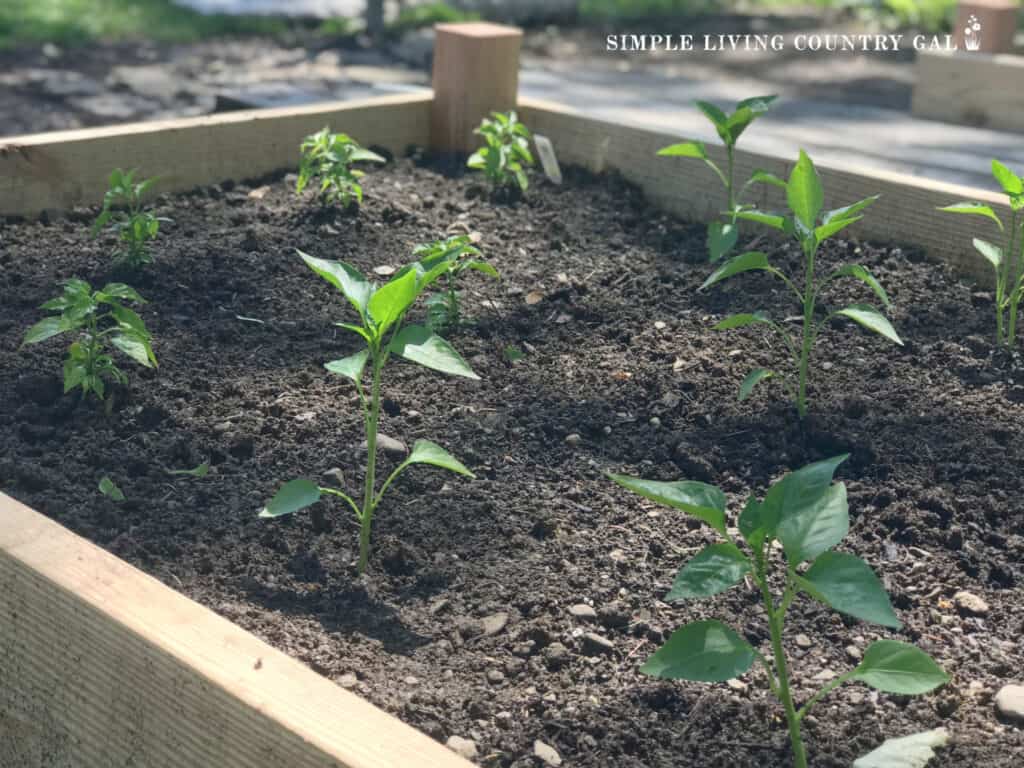
When building your raised beds, think about the depth you’ll need in advance for any plants that have a deeper root system or growing any kind of root vegetable. Rember your raised bed is to be built and placed on top of the ground where you plan to locate it permanently.
No digging is required, but remember, once you have your bed filled with dirt moving it will no longer be an option. At this point if you are still unsure of the location you have chosen, go back to step one and review the tips listed there. Better to be sure before you do the work than regret a rushed location choice later on.
Once you have your raised bed frame set in place next you will want to prepare it by lining it with a weed barrier such as landscaping fabric.
SLCG PRO TIP: If you do not want to purchase landscape fabric you can use what you already have on hand to deter weeds. Newspaper, cardboard, and other materials will work almost as well. Read more on Stopping Weeds in the Garden.
3. Fill Your Raised Bed
The soil you place in your raised bed will be the soil your plants grow in, so be thoughtful in what you use. Fill it with nutrient-rich potting soil which is part peat moss, compost, and vermiculite. To reduce weeds, you can use weed-free soil; it’s a little more expensive but worth it in the end. Or you can use my organic tips mentioned in my article above.
SLCG PRO TIP: Buying bags of organic soil can be quite expensive. Before you do call your local landscaping company and see if they have an option to purchase this soil by the yard. They usually deliver to you and will dump it wherever you need it to be, including right next to your garden. This is a great way to save on soil and your back.
Lasagna gardening is a great method to use when it comes to creating nutrient-rich soil. Just know that to use the lasagna gardening method, you may need to set it up at least a couple of months before planting so that your layers have time to compost down.
You can also layer your garden with an extra layer of potting soil on top so that you can plant right away.
4. Lay Out Your Grid
You’ll want to use a square-foot grid over your soil to help you plant with the right spacing. You can easily make one of these with some rope or wood strips or you can use a metal piece of livestock fencing if you have any lying around.
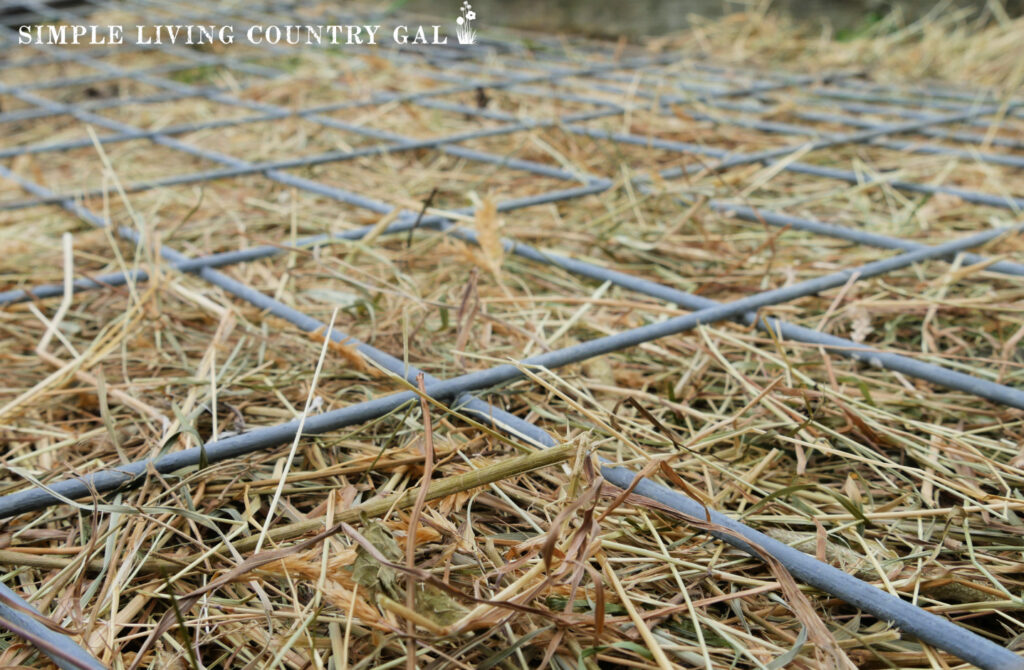
Measuring from top to bottom, lay your grid at each one-foot mark, then do the same from left to right. This should leave you with a total of 32 squares in a 4’x8’ bed and 16 squares in a 4’x4’ bed. These are the squares you’ll use for planting.
Now you’re ready to plant and grow.
How to Square Foot Garden for Beginners
Square foot gardening uses the methods of rotational gardening and companion gardening to make the most use of a small space and allow you to harvest fresh produce all year long. Whether or not it will produce enough for your family depends on a few factors:
- How many people you’re feeding
- What you plan to grow
- How much you want to harvest
If you plan to feed a family of four, you should plan on planting 2-3 beds to start; this will allow you plenty of space to test out how much produce you can grow and if it’s enough. Remember, over time, you can always add another bed or two each year if you find you need it.
The idea behind square foot gardening is simple . . . plant certain vegetables in specific amounts (the number depends on the plant) inside each square foot of your garden. This maximizes the nutrients of the space but still allows each plant the space it needs and the compactness of the garden crowds out the weeds. (My favorite part!)
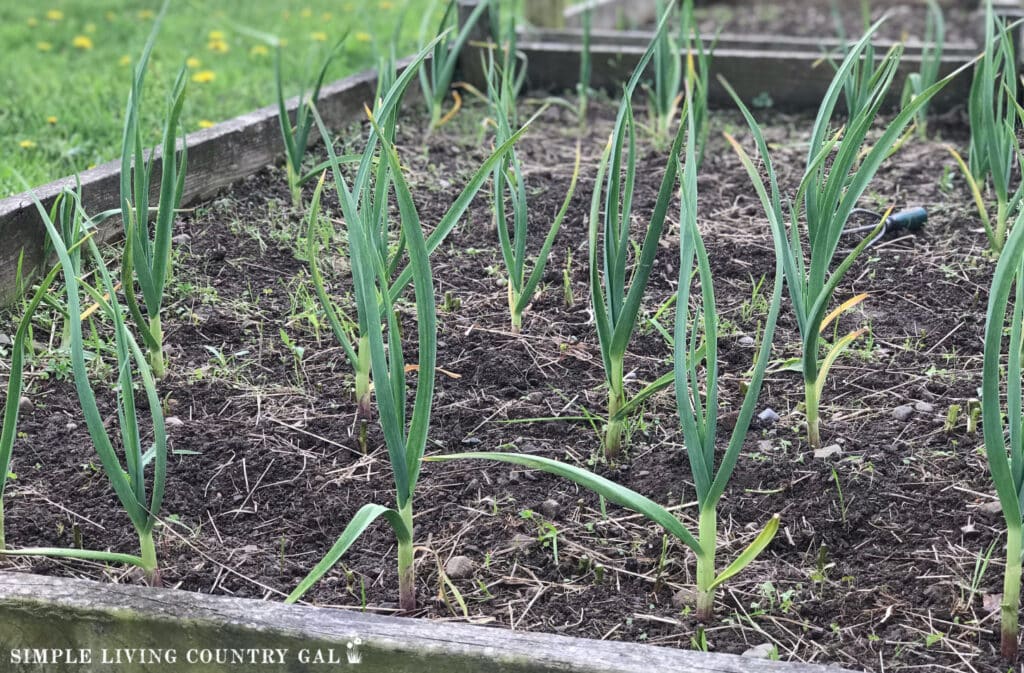
What you plant is limitless and more depends on what your family likes. You can plant vegetables, herbs, and even fruit within your grid. Just remember that each plant grows within one grid, keeping the garden neat and tidy.
It also gives each plant the room they need to grow. However, there are some plants that require less space to grow and will do just fine when you plant more than one per square for example herbs or radishes. Refer to the list below for a full list of plants and the exact room they need to grow.
Your 4’x8’ Square Foot Garden Plan
Here’s your planting guide for various fruits, vegetables, and herbs that you may want to grow and how many you can plant per square:
One Plant Per Square
- Celery
- Corn
- Eggplant
- Kale and Lettuce (head)
- Oregano
- Parsley
- Peppers
- Potatoes and Sweet Potatoes
- Rosemary
- Tomatoes (with stake)
Two Plants Per Square
- Cantaloupe
- Cucumbers
- Watermelons
- Winter Squash
Two to Four Plants Per Square
- Basil
- Garlic
- Lettuce (leaf)
- Onions
- Radishes
- Summer Squash (with cage)
- Tomatoes (with cage)
- Zucchini (with cage)

Up to Eight Plants Per Square
- Green Beans
- Beets
- Peas
- Spinach
Up to Sixteen Plants Per Square
Some vegetables need a lot of room to grow. These plants require no more than two plants for every four planting squares in order to flourish.
The basis of square foot gardening is that it also incorporates companion gardening; a method where some plants, when planted together, help each grow. Not all plants work well together though and can keep each other from growing. It’s important that you plant vegetables together that have similar light and water requirements and don’t overcrowd each other.
Take the time to plan your garden before you plant. Decide what vegetables you want to grow. Find out how much space they need. Research what plants they grow well with or shouldn’t be planted with. Then draw out your square foot garden plan on paper so you can think about where your plants need to be and how much space they need before you lay seeds.
Timing is also a factor when considering your garden. Consider how much time it takes for each plant to grow before it can be harvested and how often you’ll want to harvest. For instance, if you want to have lettuce always available, you’ll probably want to space out your planting by a week or two so that it grows at different speeds.
This will allow you to always have a fresh head of lettuce ready to eat.
Planting Your Square Foot Garden
After you’ve planned your garden, found the right spot for it, built your raised bed, and prepared your soil, you’re ready to plant.
Step #1. First, create a hole for each seed within each square based on your plan. You don’t need to dig deep; you can create a small hole with your finger or by lifting a little dirt out with a trowel. Make sure the holes are set up equally distanced from each other in a grid-like format within each square. This allows your plants to have all the room they need to grow.
Step #2. Next, plant two to three seeds of each plant in each hole, then cover them with soil.
Step #3. Finally, give your garden a good watering. Your soil should be damp, but not overwatered. If you have puddles of water on top, you’ve watered too much. Allow the soil time to soak in the water.
Keep your garden regularly watered and watch it grow. Once your plants start to sprout, look for the strongest looking seedling in each group, and pull the other so that your plants won’t be overcrowded and have all the room they need.
Planting extra seeds ensures that you’ll give your plants the best chance possible. Some seeds may not sprout and others won’t grow well. Planting more than one then removing the extras means that you’ll have healthy plants growing sooner without having to replant.
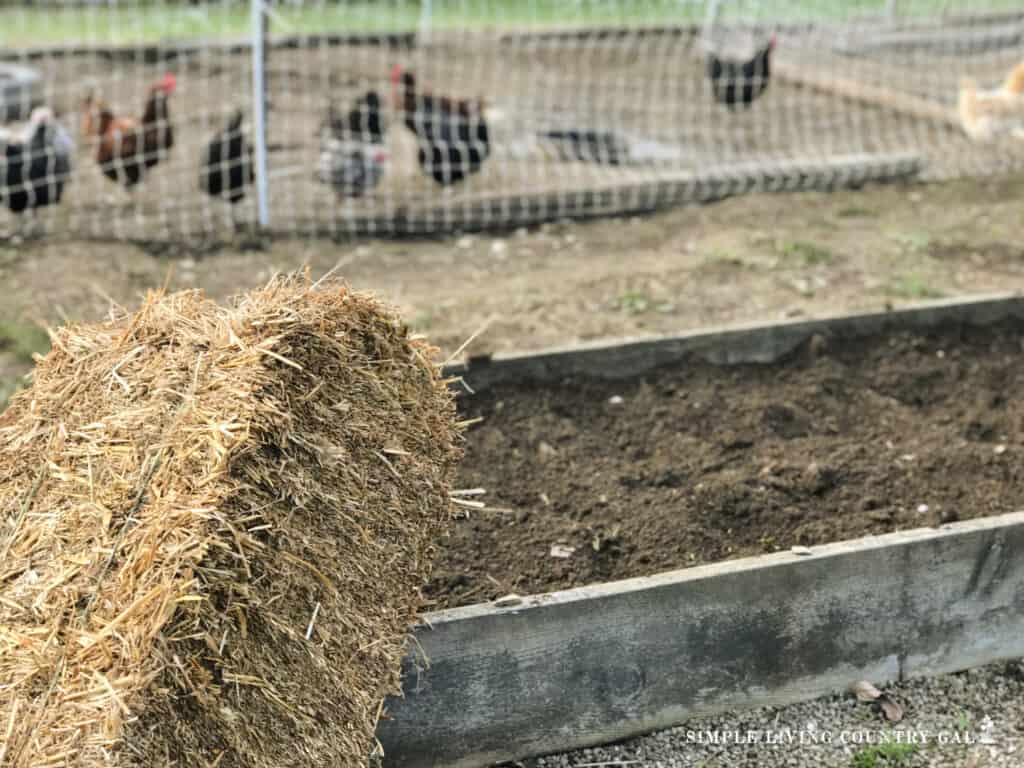
Square foot gardening is perfect for beginners. It’s easy to start up and plant, it yields a nice harvest in a small space, and requires less maintenance than some other gardening methods. With just two to three beds, you can grow enough produce to feed your family and feel better about knowing exactly where your produce comes from.
Square foot gardening also lends itself to organic gardening so you can feel good about what you feed your family.
If you want to give gardening a try and you don’t have a lot of space or don’t want to dig up your yard; square foot gardening for beginners is the way to go.
